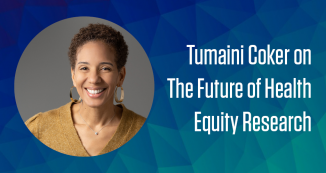
08 Jun Reaching More Children via Technology for Mental Health Care
Kathleen Myers, MD, MPH wants to help support families with a child who is struggling with mental or behavioral health problems, especially families who live far from the offices of a child and adolescent psychiatrist.
From her position at Seattle Children’s Hospital, Myers has been involved in what is called “telemental health,” or TMH, for many years. But until she received a pilot grant of $10,000 from the ITHS, she had not been able to systematically demonstrate the effectiveness of TMH in improving the mental health care and outcomes for children living in underserved areas.
Telemental health refers to clinical sessions conducted interactively and in real time with a mental health specialist, usually a psychiatrist, over videoconferencing. Patients go to a clinic in their community where they “meet” via a large television monitor with the telepsychiatrist who is located at a distant medical center.
With the ITHS grant, Myers was able to enroll children in a pilot project examining the feasibility and effectiveness of providing treatment through TMH to children diagnosed with Attention Deficit Hyperactivity Disorder (ADHD). This project uses high definition TMH to provide diagnosis, medication management, education regarding the causes and management of ADHD.
Myers is an Associate Professor at the University of Washington and Director of the Telemental Health Service at Seattle Children’s Hospital.
She wanted to do a large study comparing TMH with traditional in-person care, but she was having difficulty obtaining grant funding after repeated attempts. She turned to ITHS and received sufficient funds to do a small pilot study with 20 participants. During that pilot study – while she had very preliminary results – the National Institute of Mental Health granted her $2.8 million to begin her larger study.
“It made a big difference,” she said, about getting the money to set up the pilot study. Already, her NIMH study has enrolled 210 of the projected 250 participants who live in various sites across Washington.
Nationally, there is a recognized crisis in providing treatment to youth with psychiatric disorders, part of which is attributable to the scarcity of psychiatrists in rural areas who are trained to treat mental health problems during childhood and adolescence. In particular, ADHD affects up to 7% of the nation’s children across all geographic areas, but access to treatment varies greatly. If TMH can be shown to be effective, this could allow expansion of such services to fill some of the gap. Currently, primary care physicians in underserved areas try to fill this gap, but they need help when children struggle with more complicated clinical needs.
Myers notes that “…children treated through TMH have improved significantly and their parents have expressed great satisfaction with their children’s care.” It seems obvious that most families would choose care in person over TMH. But, one advantage of TMH in small communities is that people may not want to see a psychiatrist who could also be a neighbor and they also cannot travel long distances to receive ongoing care. TMH provides needed privacy and convenience, in addition to psychiatric expertise.
Myers is also the Co-Chair for the Telepsychiatry Committee of the American Academy of Child and Adolescent Psychiatry (AACAP) and has authored practice parameters and treatment guidelines on the use of TMH for both the AACAP and for the American Telemedicine Association.
Resources:
From the Journal of Telemedicine and Telecare, 2010, “Child and adolescent telepsychiatry.”
The project described was supported by the National Center for Research Resources and the National Center for Advancing Translational Sciences, National Institutes of Health, through Grant UL1RR025014. The content is solely the responsibility of the authors and does not necessarily represent the official views of the NIH.








